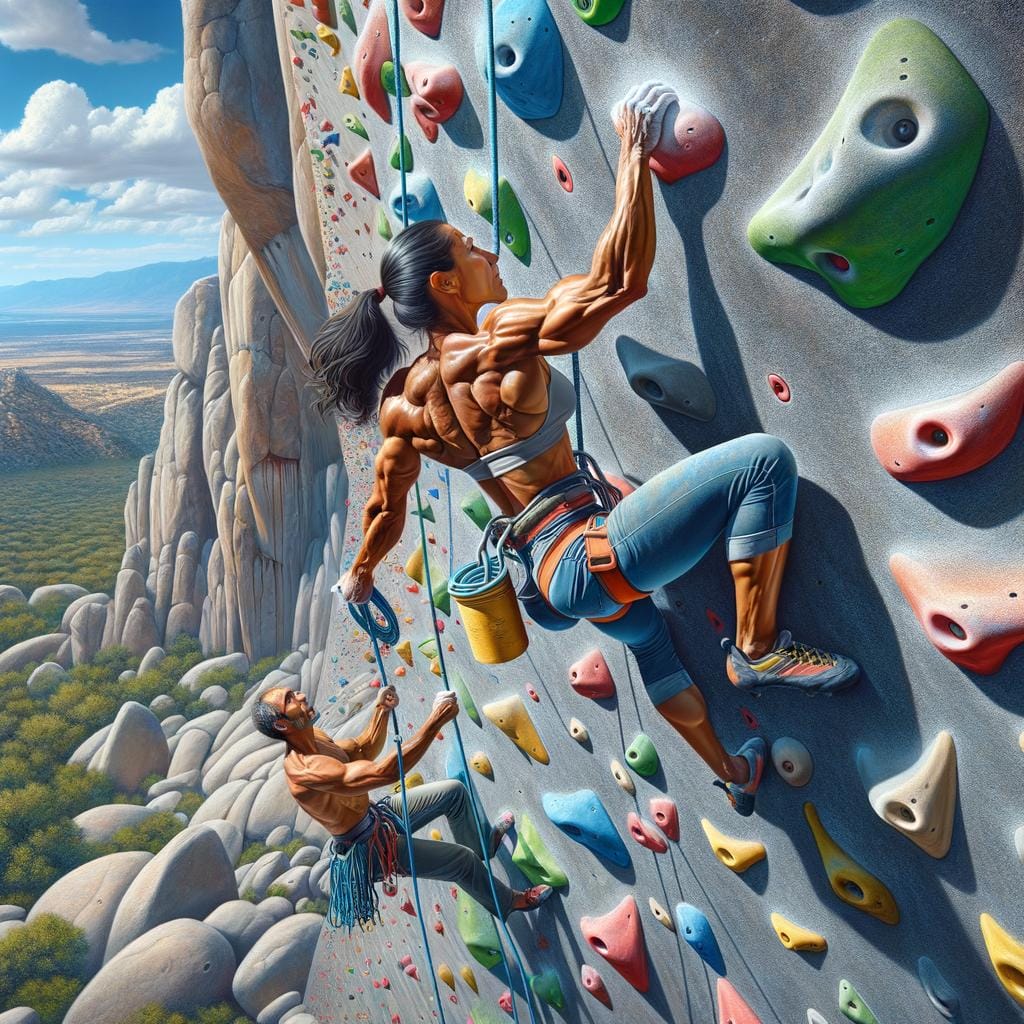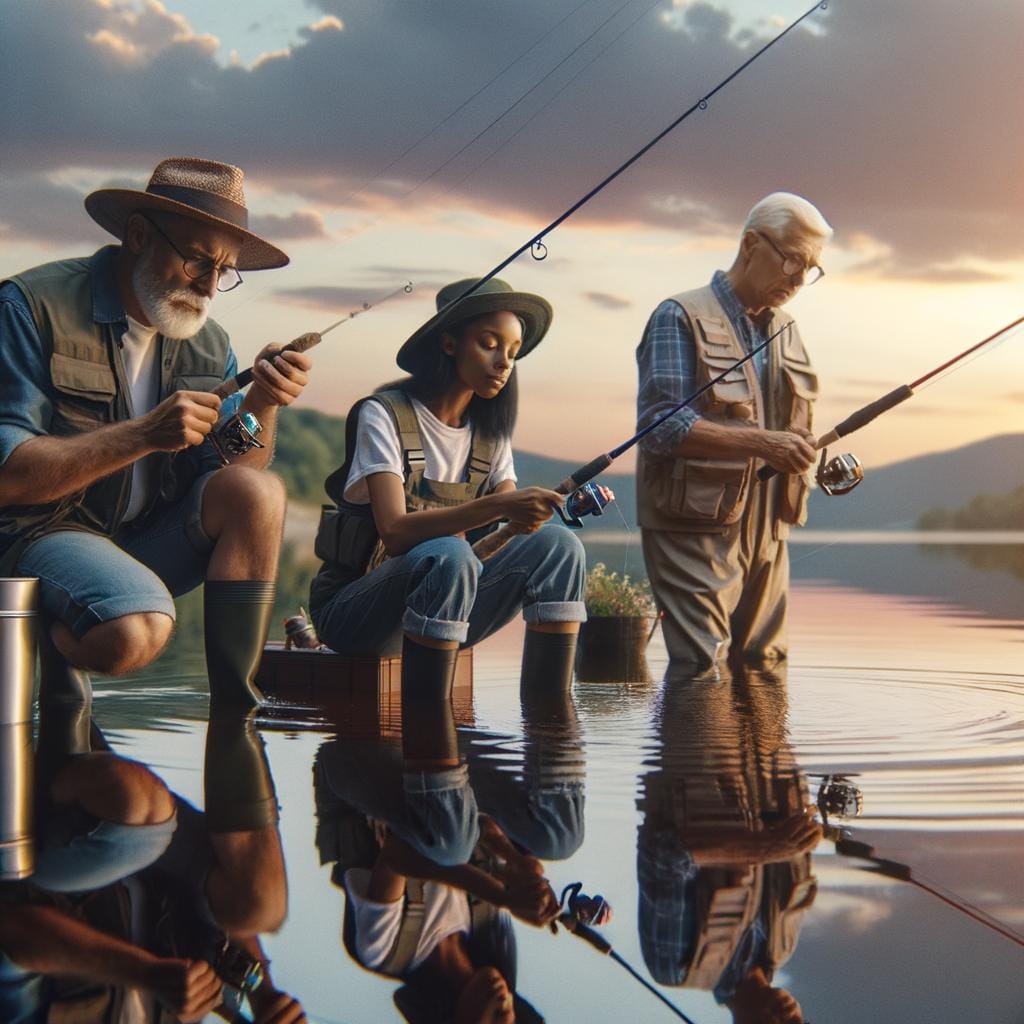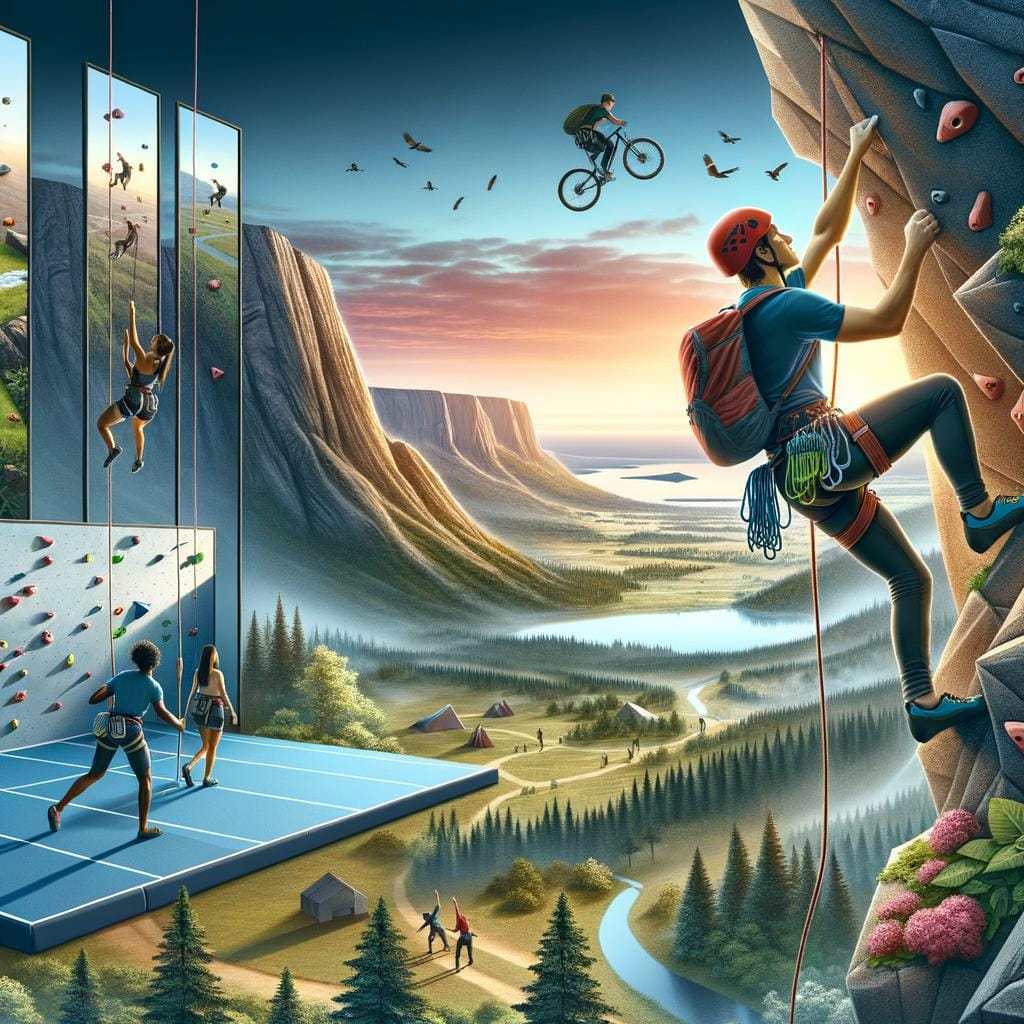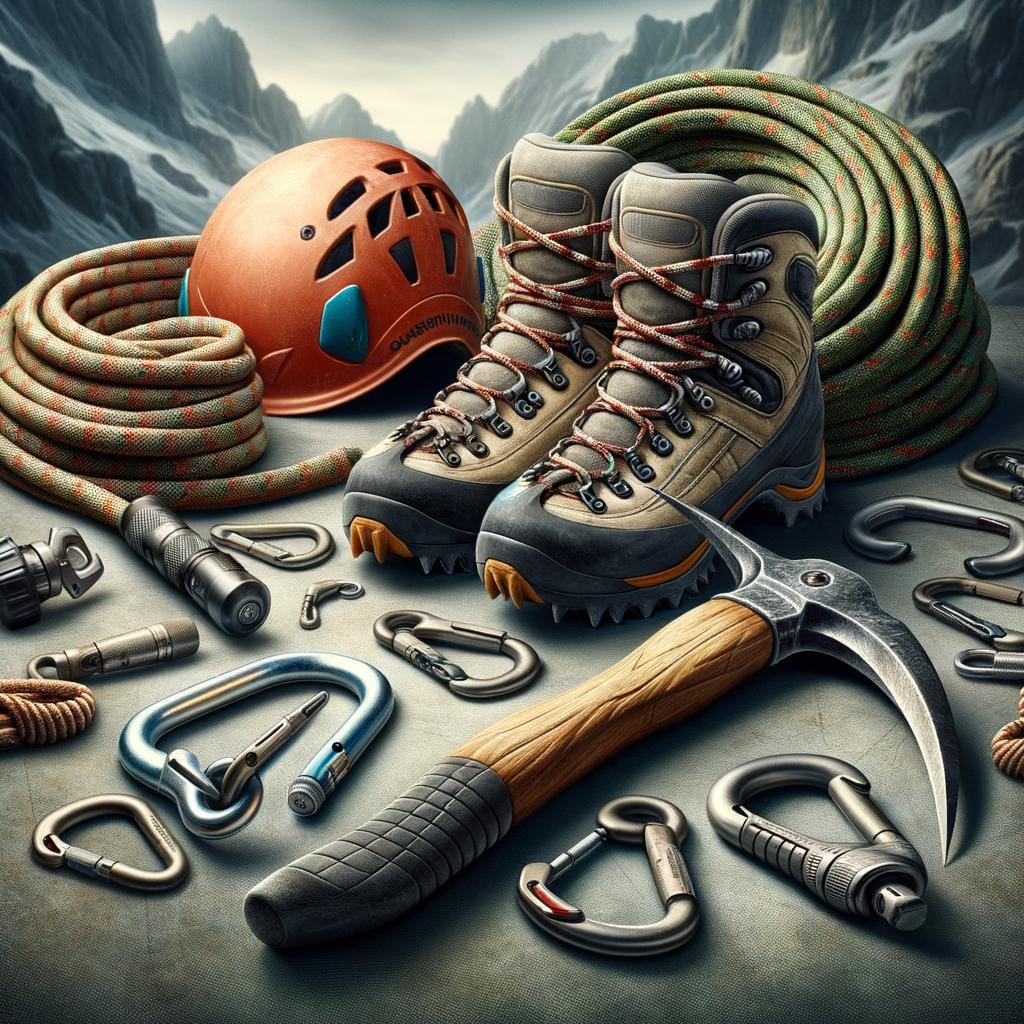Sport climbing, a thrilling and exhilarating activity that combines physical strength, mental focus, and strategic skills, has been gaining significant traction in the outdoor recreation world. As climbers ascend vertical walls using natural handholds and artificial footholds without the use of fixed anchors for safety, sport climbing challenges individuals both physically and mentally. With its roots in traditional climbing, sport climbing has carved out its niche as a popular discipline within the larger realm of rock climbing.
This section will delve into the fundamentals of sport climbing, shedding light on what exactly this dynamic sport entails and why it is attracting an ever-growing community of enthusiasts. From understanding the basic concepts of lead climbing to grasping the essence of clipping techniques, this introduction aims to provide a comprehensive overview for beginners looking to venture into the world of sport climbing.
With a focus on indoor gyms and outdoor crags alike, sport climbing offers diverse opportunities for climbers to test their limits and push themselves to new heights.
Whether you are a seasoned climber or someone just getting started on their vertical journey, exploring the realm of sport climbing can open up a world of possibilities. From scaling limestone cliffs in Thailand to tackling rugged sandstone formations in Utah, the allure of sport climbing lies in its ability to challenge both body and mind while fostering a sense of community and camaraderie among fellow climbers.
Join us as we unravel the thrill and excitement that sport climbing has to offer in this introductory guide.
History of Sport Climbing
Sport climbing has a rich history that dates back several decades, with its roots in traditional rock climbing. In the early days of climbing, climbers would place their own protection as they ascended the rock, using natural features like cracks and fissures for anchors. However, as the sport progressed, climbers sought more challenging routes that required bolts to protect the climbs. This marked the beginning of sport climbing as we know it today.
One of the pivotal moments in the history of sport climbing was the development of bolted routes in Europe during the 1970s and 1980s. Climbers began drilling bolts into the rock to create permanent anchors, allowing them to push their limits on harder and steeper routes. This innovation revolutionized the sport, giving rise to a new style of climbing that focused on difficulty and movement rather than just reaching the summit.
As sport climbing gained popularity around the world, competitions started to emerge as a way for climbers to showcase their skills and abilities. The first official sport climbing competition took place in Snowbird, Utah in 1988, laying the foundation for what would eventually become a recognized competitive discipline within the climbing community. Today, sport climbing is not only a popular outdoor activity but also a highly competitive sport with athletes competing at national and international levels.
Gear and Equipment for Sport Climbing
Sport climbing is a thrilling and challenging outdoor activity that has been gaining popularity among adrenaline junkies and outdoor enthusiasts. To fully enjoy the sport and stay safe while scaling those rocky cliffs, it is crucial to have the right gear and equipment. Here is a detailed guide on the essential items needed for sport climbing:
- Ropes: One of the most crucial pieces of equipment for sport climbing is the climbing rope. Dynamic ropes are commonly used in sport climbing due to their stretchiness, which helps absorb falls and reduce impact on the climber.
- Harnesses: Another essential item for sport climbing is a good quality harness. Climbing harnesses should fit snugly but comfortably around your waist and thighs, providing support when hanging or falling during climbs.
- Climbing Shoes: Choosing the right pair of climbing shoes can greatly impact your performance while sport climbing. Look for shoes with a snug fit and rubber soles for better grip on rock surfaces.
When gearing up for a day of sport climbing, it’s important to also consider other equipment like carabiners, quickdraws, belay devices, helmets, and chalk bags. Investing in high-quality gear and regularly checking for wear and tear can ensure a safe and enjoyable climbing experience.
Remember that proper maintenance and care of your equipment are essential for safety while engaging in sport climbing activities. Regularly inspecting your gear for any signs of damage or wear, as well as following manufacturer guidelines for use and storage, can help prevent accidents or mishaps during climbs.
Whether you’re a seasoned climber or just starting out in the world of sport climbing, having reliable gear can make all the difference in your overall performance and safety on the rock walls.
Training and Techniques for Sport Climbing
Sport climbing is a physically demanding and mentally challenging sport that requires not only strength but also technique and skills. In order to improve as a sport climber, focusing on training and mastering various techniques is essential. Here are some tips and strategies to enhance your climbing abilities and overall performance in sport climbing.
Strength Training
Building upper body strength is crucial for sport climbing, as it involves pulling yourself up the wall using your arms. Incorporating exercises such as pull-ups, chin-ups, push-ups, and forearm exercises can help develop the muscles necessary for climbing. Additionally, core strength is also vital for maintaining stability while on the wall, so including core workouts like planks and leg raises in your training routine is beneficial.
Technique Improvement
Even the strongest climbers can struggle if they lack proper technique. Climbing efficiently and effectively requires mastering footwork, body positioning, and route reading. Practicing precision when placing your feet on holds, keeping your body close to the wall to minimize energy expenditure, and learning how to rest on the wall can greatly improve your climbing performance. Taking time to work on these technical aspects during each climb will gradually enhance your overall skill level.
Endurance Building
Sport climbing routes can be long and sustained, requiring a good level of endurance to complete them successfully. To improve endurance for sport climbing, dedicate some of your training sessions to longer climbs or boulder problems with multiple moves.
Interval training or circuit workouts that mimic the intensity of a climb can also help boost cardiovascular endurance. By gradually increasing the duration and difficulty of your climbs in training, you’ll build up the endurance needed to tackle challenging routes in sport climbing competitions or outdoor crags.
Popular Sport Climbing Destinations
Sport climbing enthusiasts are always on the lookout for the next thrilling challenge, pushing their limits on towering rock faces and steep cliffs around the world. From limestone crags to granite cliffs, there are countless destinations that offer diverse terrain and breathtaking views for climbers of all levels. Here are some of the most popular sport climbing locations that should be on every climber’s bucket list:
Red River Gorge, Kentucky
Known for its iconic sandstone cliffs and over 2000 sport climbing routes, Red River Gorge is a mecca for climbers in the United States. With routes ranging from beginner-friendly to expert level, this picturesque location offers a variety of challenges set amidst stunning natural surroundings. Climbers flock to Red River Gorge not only for the quality of the climbs but also for the vibrant climbing community and welcoming atmosphere that permeates the area.
Kalymnos, Greece
For those seeking an international climbing experience, Kalymnos in Greece is a must-visit destination. This idyllic island in the Aegean Sea boasts world-class limestone crags with a plethora of well-bolted routes suitable for climbers of all abilities. The turquoise waters and charming Greek villages add to the allure of Kalymnos, making it a favorite spot for climbers looking to combine their passion for sport climbing with a relaxing beach vacation.
Ceüse, France
Nestled in the French Alps, Ceüse is revered as one of the premier sport climbing destinations in Europe. The compact white limestone rock formations offer some of the most challenging and rewarding climbs in the world.
The stunning panoramic views from the top of Ceüse make conquering its routes even more gratifying for adventurous climbers. Whether you’re an experienced climber or a novice looking to improve your skills, Ceüse promises an unforgettable climbing experience against a backdrop of alpine beauty.
Safety Tips for Sport Climbing
Sport climbing is a thrilling and challenging activity that requires both physical strength and mental focus. As with any adventure sport, safety should always be a top priority to ensure a fun and injury-free experience. Here are some important safety tips and guidelines to follow when engaging in sport climbing:
- Check your gear: Before starting your climb, always make sure to check your gear for any signs of wear or damage. This includes inspecting your harness, ropes, carabiners, and other equipment to ensure everything is in good working condition.
- Warm-up properly: Just like any physical activity, it’s essential to warm up your muscles before tackling a climb. Doing some light stretching exercises can help prevent injuries such as muscle strains or sprains.
- Communicate with your belayer: Clear communication between the climber and the belayer is crucial for a safe climb. Make sure you have established signals or commands to indicate when you’re ready to climb, lower, or need assistance.
In addition to these basic safety tips, it’s also recommended that climbers undergo proper training and education before attempting more challenging routes. Taking a course on sport climbing techniques and safety procedures can provide valuable knowledge on how to navigate different types of terrain and handle unexpected situations.
Remember that sport climbing is not just about reaching the top but enjoying the journey and the process of overcoming obstacles along the way. By prioritizing safety measures and being well-prepared, you can fully embrace the adrenaline rush and sense of accomplishment that come with conquering a challenging route in this exhilarating sport.
Benefits of Sport Climbing
Sport climbing offers a multitude of benefits that extend beyond physical fitness. One of the primary advantages of this sport is the improvement in overall strength and flexibility. Climbing requires the engagement of various muscle groups, including those in the arms, core, and legs, leading to enhanced strength and endurance over time. Additionally, climbers develop exceptional balance and coordination skills as they navigate different routes on the rock wall or outdoor cliffs.
Beyond the physical aspects, sport climbing also presents mental challenges that can be greatly rewarding. Climbers often have to problem-solve on the spot, strategizing their moves to conquer difficult routes or boulders. This mental aspect can improve focus, concentration, and decision-making skills.
Furthermore, sport climbing promotes stress relief and mindfulness as individuals immerse themselves in the present moment while tackling challenging routes. The sense of accomplishment that comes from successfully completing a climb also boosts confidence and self-esteem.
Engaging in sport climbing can have positive emotional effects on individuals as well. The supportive community within the climbing world fosters camaraderie and friendships among climbers of all levels. The sense of community and shared passion for the sport creates a welcoming environment for individuals to challenge themselves and push their limits safely. Additionally, being outdoors surrounded by natural beauty while climbing can contribute to an overall sense of well-being and connection to nature.
| Advantages | Description |
|---|---|
| Physical Fitness | Improved strength, flexibility, balance, and coordination. |
| Mental Challenges | Enhanced problem-solving skills, focus, concentration, decision-making abilities. |
| Emotional Well-being | Promotion of stress relief, mindfulness; fostering friendships and sense of community. |
Interviews With Pro Climbers
Sport climbing has undoubtedly become a thriving and exhilarating pursuit for outdoor enthusiasts and adventure seekers around the world. The combination of physical challenge, mental focus, and the thrill of conquering heights has attracted a diverse range of individuals to this sport. As more people discover the joy of scaling cliffs and rock faces, sport climbing continues to grow in popularity as a recreational activity and competitive endeavor.
One of the fascinating aspects of sport climbing is its rich history and evolution over the years. From its humble beginnings to becoming a recognized sport with international competitions, sport climbing has undergone various developments in techniques, equipment, and training methods. As climbers push their limits on increasingly difficult routes and boulders, the culture and community surrounding sport climbing continue to expand and evolve.
Whether you are a seasoned climber or a beginner looking to explore this exciting discipline, understanding the gear, training techniques, safety precautions, and benefits of sport climbing is crucial. By immersing oneself in this challenging yet rewarding activity, individuals can experience personal growth, improved physical fitness, mental resilience, and a sense of accomplishment.
Sport climbing offers not only an opportunity to connect with nature but also a chance to test one’s limits and surpass boundaries both on the rock walls and in life.
Frequently Asked Questions
What’s the Difference Between Sport Climbing and Bouldering?
Sport climbing and bouldering are both forms of rock climbing, but they differ in key aspects. Sport climbing involves climbing routes that are typically longer and require the use of ropes for safety. Bouldering, on the other hand, involves climbing shorter walls or boulders without ropes, often focusing on more technical moves.
What Are the Three Disciplines of Sport Climbing?
The three disciplines of sport climbing are lead climbing, speed climbing, and bouldering. Lead climbing involves a climber attaching oneself to a rope and clipping into protection as one ascends a route. Speed climbing is a competitive discipline where climbers aim to ascend a standardized route as quickly as possible. Bouldering focuses on shorter climbs using padded mats for protection.
What Is Sport Climbing Game?
Sport climbing games refer to various activities or challenges within the sport that add an element of fun or competition. Some popular sport climbing games include “Add-On,” where climbers take turns adding new moves to a sequence, “Eliminator,” where climbers compete by eliminating each other from completing specific climbs, and “Horse,” which is similar to the basketball game but with rock climbing moves instead.
These games help climbers improve their skills while enjoying the sport in a more social setting.

An avid outdoor enthusiast, writer, and environmental advocate who has spent over two decades exploring the world’s most breathtaking landscapes. With a background in environmental science and a passion for adventure, Frances combines her love for nature with her talent for storytelling to inspire others to embark on their own outdoor journeys.





